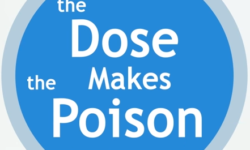This Holiday Shopping Season, We Encourage Consumers to Mind the Science

The holiday season is almost upon us, as consumers begin to think about what gifts and goodies to stock up on during Black Friday and Cyber Monday. As retailers and manufacturers jostle for consumer dollars, it’s pretty common to see products labeled “non-toxic,” “all natural,” or “green” in an attempt to attract the growing pool of health-conscious shoppers.
Unfortunately, this advertising – as well as a wealth of misinformation about chemical safety circulating around the internet – makes it hard for consumers to feel confident about product safety. After all, a product isn’t unhealthy simply because it lacks a flashy claim about being free from harmful chemicals. Alternatively, something as natural as a potted poison ivy plant certainly wouldn’t make a welcome Christmas gift. The “natural is good, chemicals are bad” mantra just doesn’t hold up.
What’s more, ingredients that sometimes raise consumer alarm, like BPA, formaldehyde, and PFAS all serve important functions in the products that contain them. BPA strengthens flexible plastics. Formaldehyde donors prevent bacteria and mold from growing in your shampoo and other personal care products. And fabric coatings made from per-and polyfluoroalkyl substances (collectively called PFAS) help provide a durable, water- and oil-repellant finish to outdoor gear like jackets, tents and backpacks. The good news is that when it comes to ingredient safety, every one of the chemicals used in significant amounts in today’s economy has undergone a number of safety evaluations; enough that regulatory agencies across the globe are confident in their safety.
When it comes to assessing the actual risk of specific chemicals, it’s the dose (amount of a chemical ingredient in a product) and route of exposure (eating, breathing, or absorbing through the skin, for example) that play a more important role in safety. Think about perfume as an example: A small dab smells nice and pleasant, but if you’d likely be in for a headache, watery eyes, or nausea if you used an entire bottle of perfume at once. The different dose matters.
When the media reports on the “latest study” showing an association between a certain chemical and poor health outcomes, the study is often testing a dose or route of exposure that’s just not possible in humans.
Instead of buying in to chemical scare tactics, consumers should feel empowered to understand the science behind chemical safety. Web tools like Mind the Science and Chemical Safety Facts are good resources in this regard. If you really want to be informed before you buy, turn to sound science, not scare tactics.





